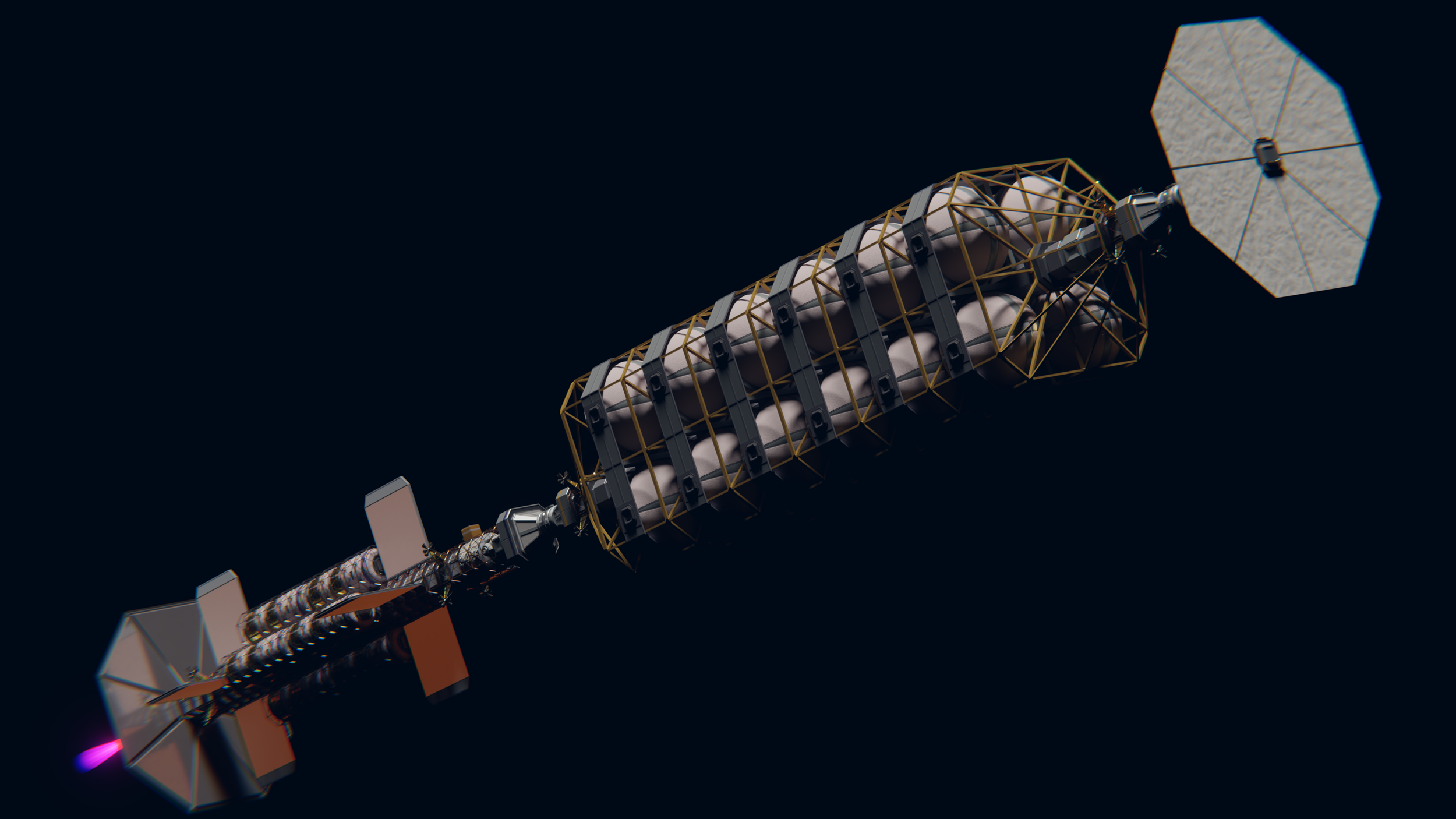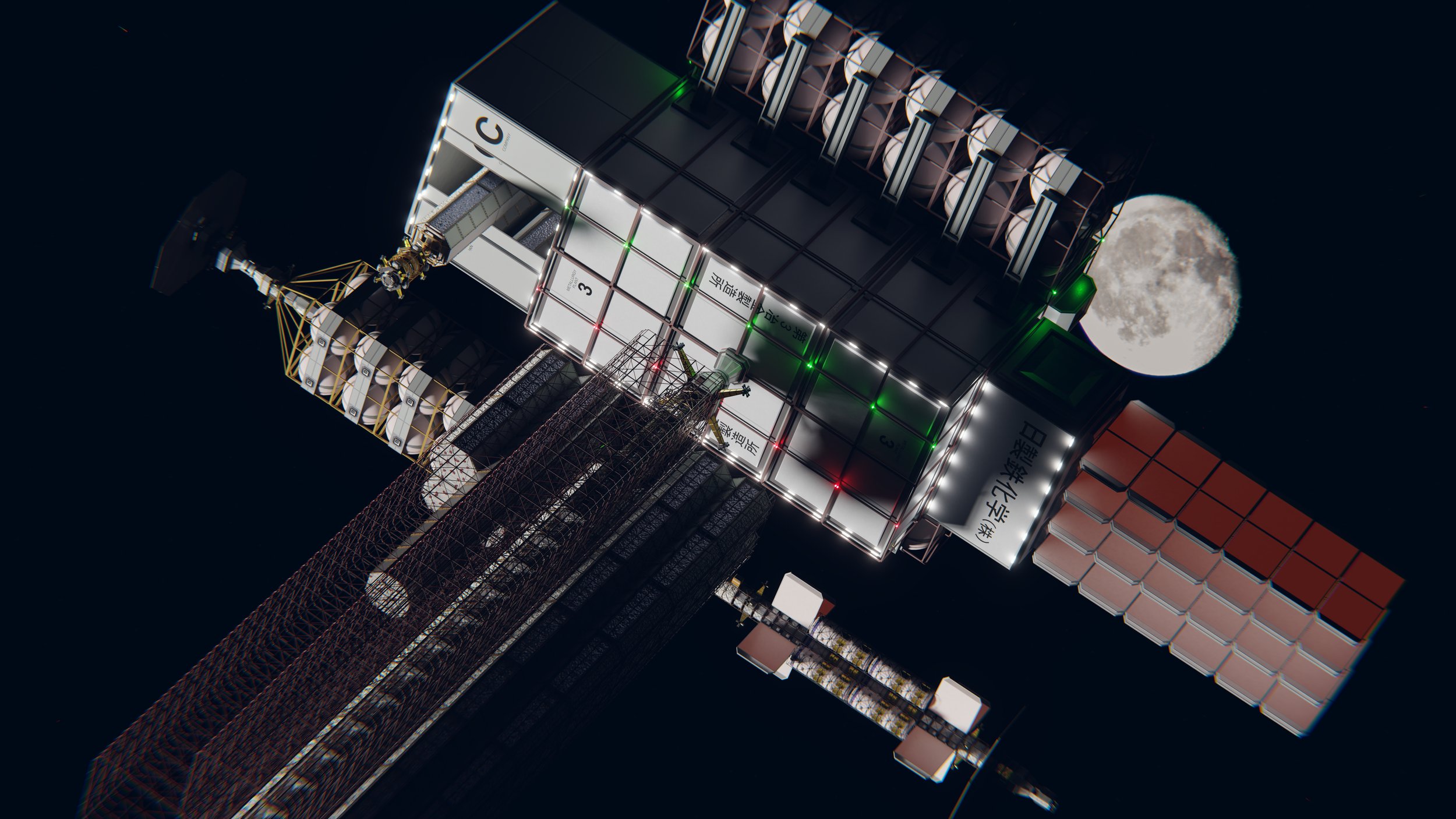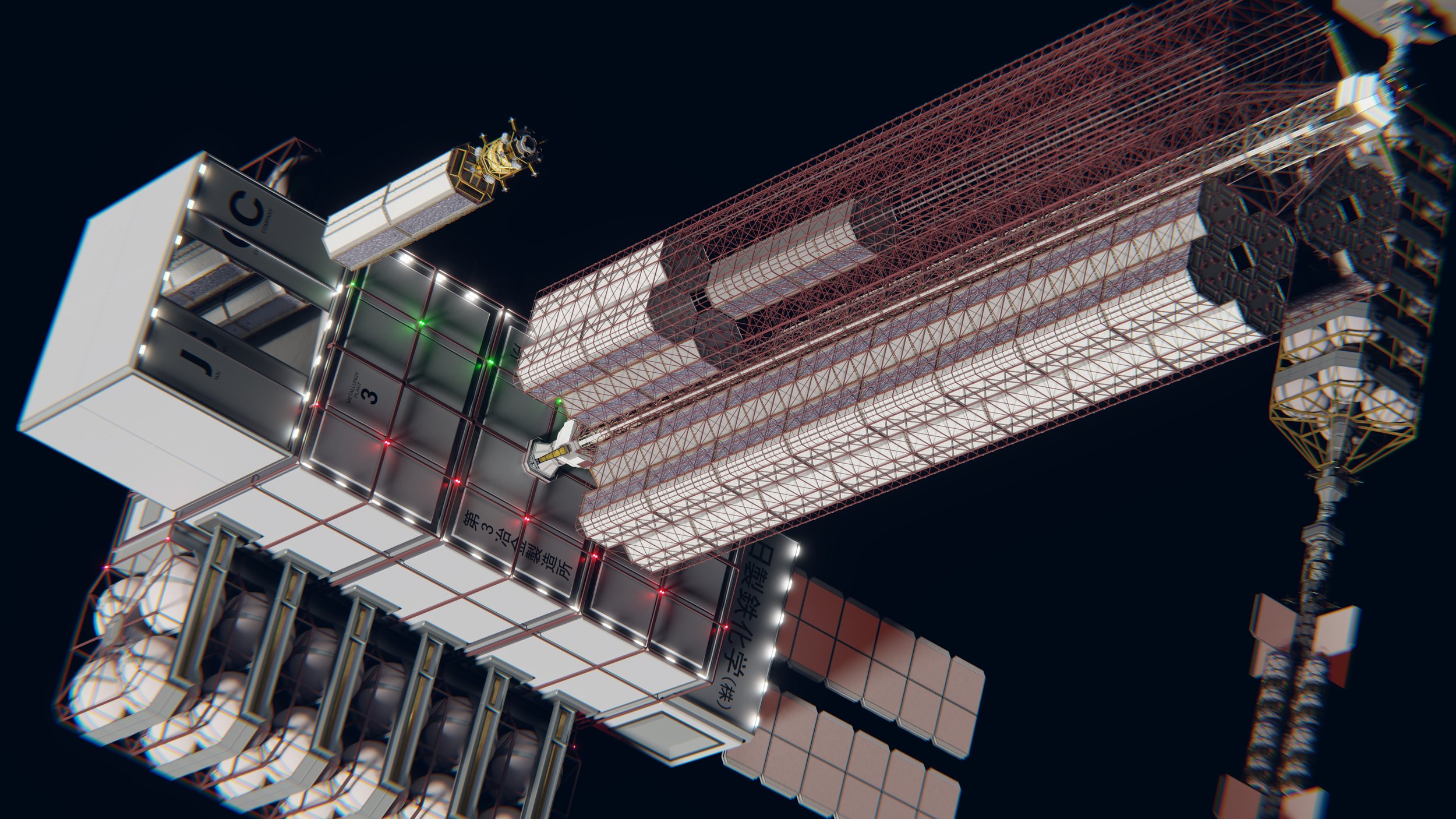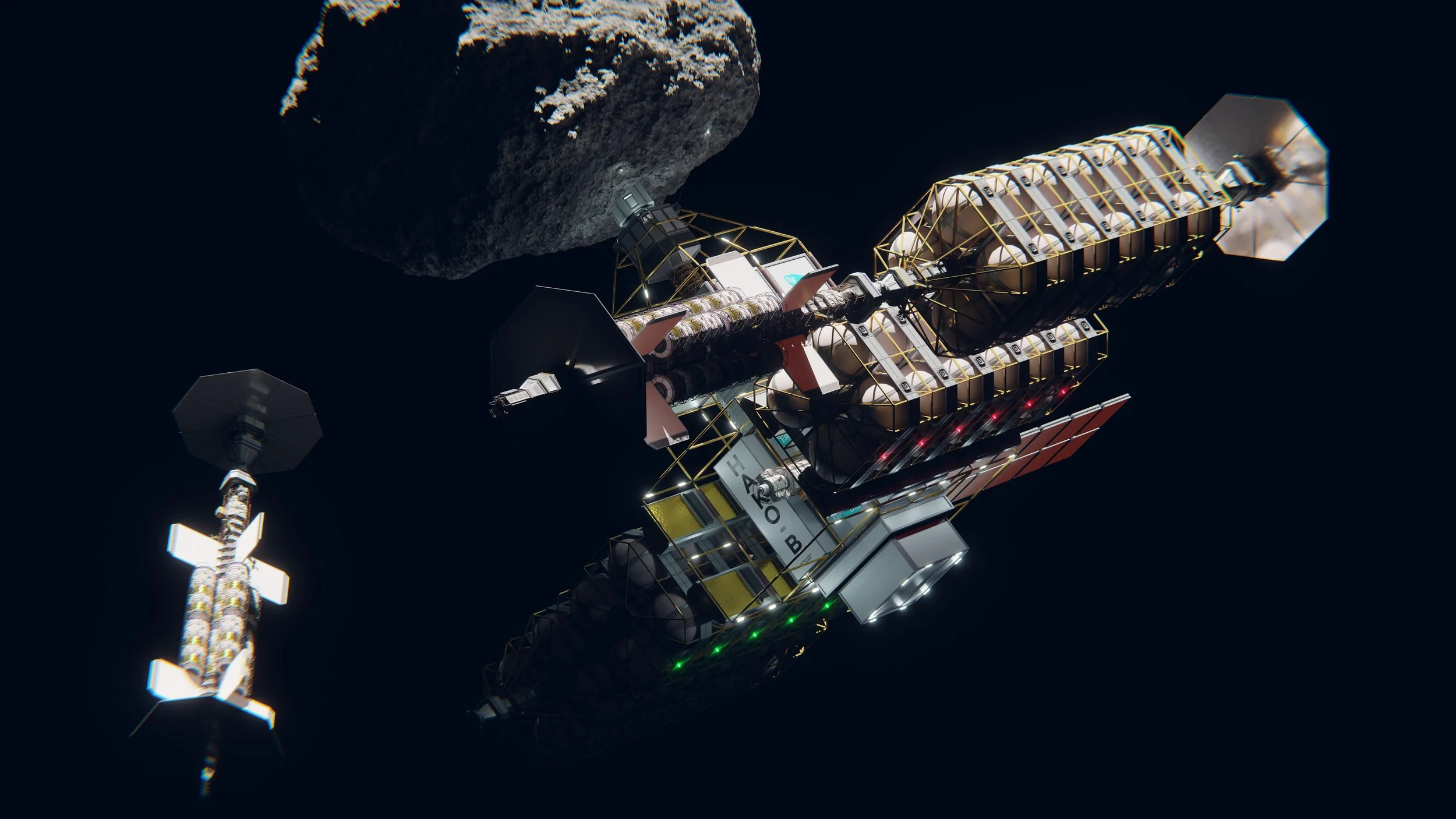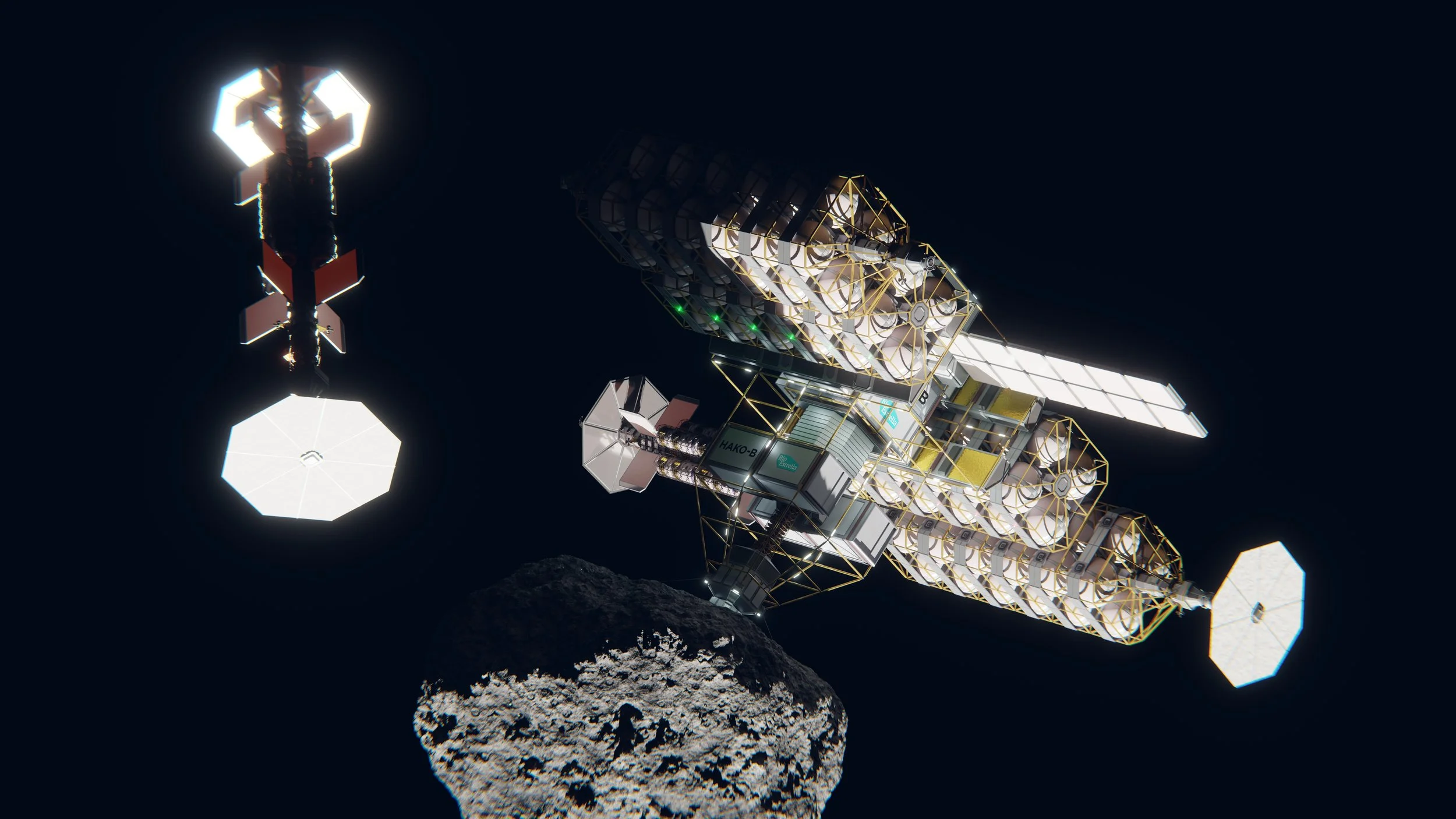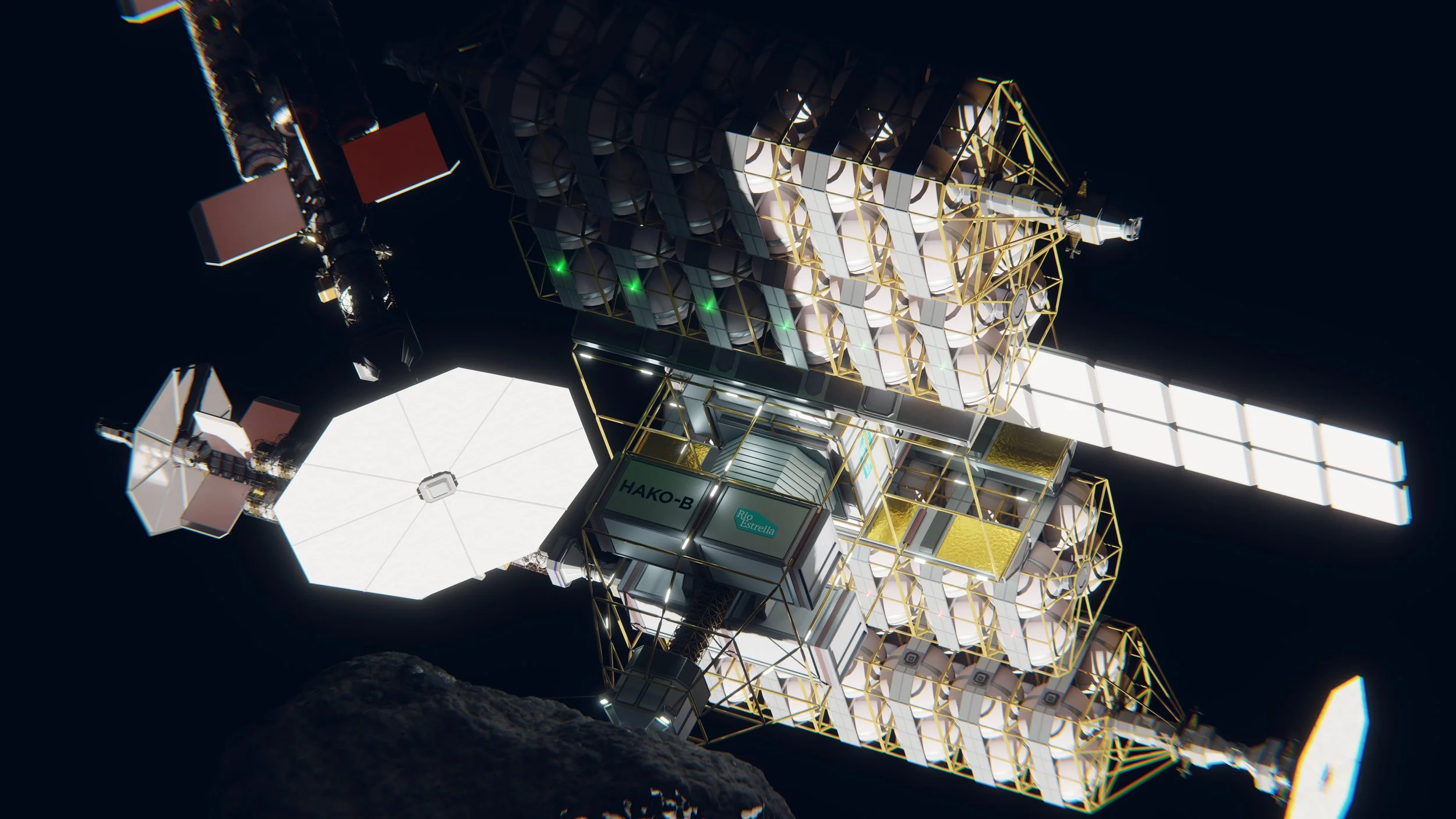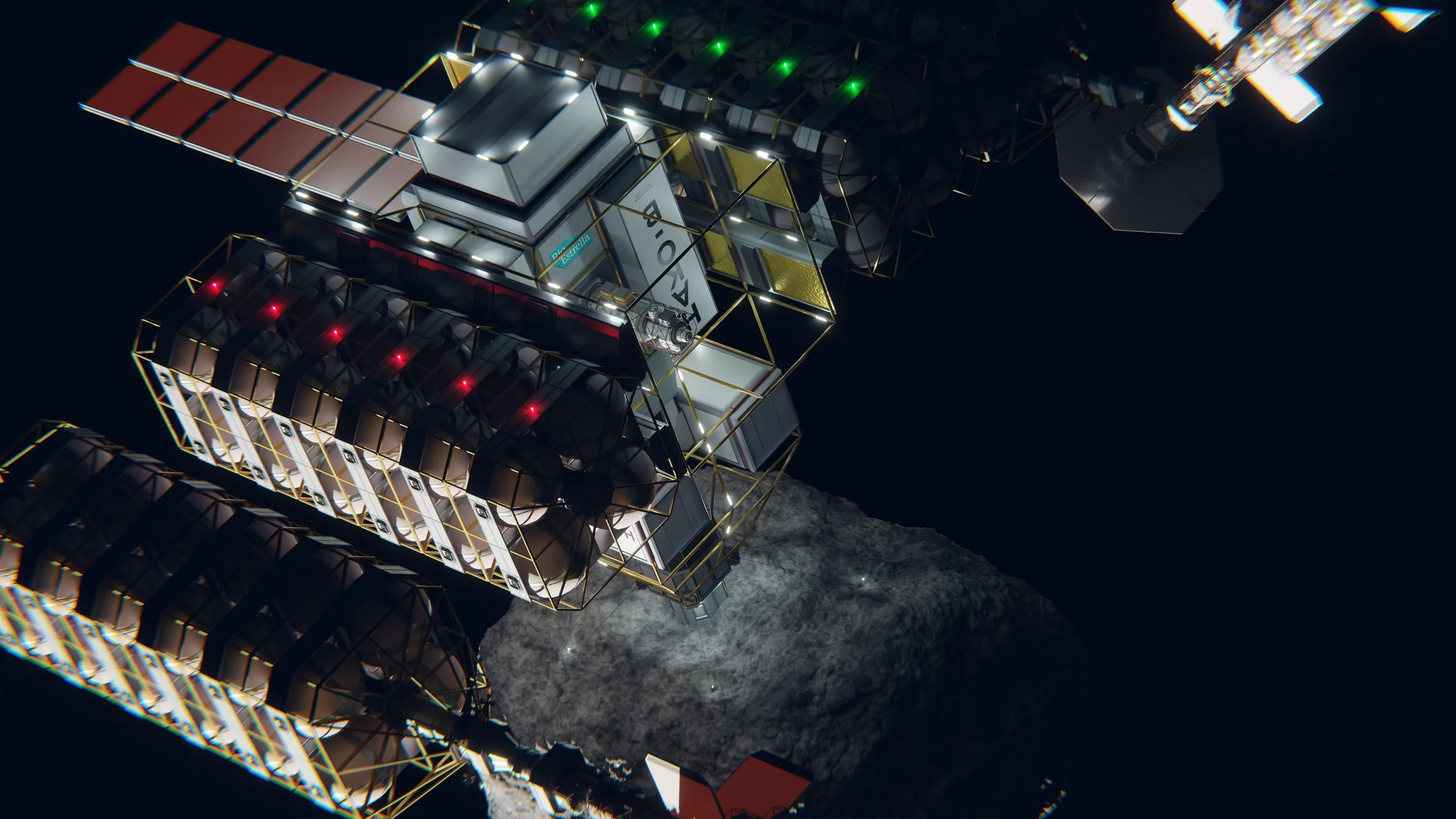Japanese Crewed Commercial Vessel — Comet Class - Blue Rose
By the mid-21st century, the experimental asteroid mining ventures of the 2030s began rapidly maturing into a sprawling industry worth trillions of dollars.
Technological processes were refined and supply chains were optimized into a Solar System-spanning factory designed to manufacture whatever a fledgling space-faring civilization needed.
Central to the asteroid extraction and processing trade are metallic carbonyls. Used as a storage medium and intermediary compound, carbonyls can keep the metals and alloys mined from asteroids stable for transportation and are part of a specific metallurgical processed used to produce pure metal billets for construction and manufacturing.
The transport and handling of carbonyls, as a result, is an enormous industry in its own right, worth billions of dollars. One of the ships that operates in this massive industry is the Comet-class ship, the JCCV Blue Rose.
Like most other workhorse cargo ships, the Blue Rose is a tug designed to handle a myriad of standardized payloads. With the SVI protocol established across nearly every commercial vessel, tugs like the Blue Rose can pick up, transport, and drop any cargo that conforms to the standard.
That said, it is common to see specific tugs operating a certain class of missions for a customer(s) over long periods. In the case of the Blue Rose, the ship is often found running Carbonyl tanks between extraction rigs in the asteroid belt and processing plants in the Earth-Moon system.
Idea:
After completing the first renders of the USSF Colorado, I was eager to start tackling a follow-on project for the second half of Spaceshiptember. Having done a military vessel, I was keen on working on something more civilian this time.
A popular topic in the hard science fiction community is realistic renditions of hypothetical military spacecraft. It often gets a lot of traction and attention in the space. Something that is also talked about on occasion, but gets no where near as much attention is the civilian and industrial side of hard science fiction. Think big flashy battleships over your humble bulk cargo carrier.
Following the principles I set out with the Colorado, I tried thinking of designs from the lens of grounded engineering, where the model would be deeply informed by contemporary and near-future technologies and science. This time, though, I focused on extrapolating futures related to on-orbit industrial applications. Having read books and watched videos on the topic, I was particularly interested in the area of asteroid mining and the industrial processing following the extraction of its resources.
Process:
Using the same process and modeling philosophy as the USSF Colorado, I developed modular designs that could then be combined together to create the whole vehicle. Additionally, some of the assets I developed for the Colorado proved useful for the Blue Rose, and helped to accelerate modeling. The recycling of models for similar applications was a fun exercise in virtual ‘kit-bashing,’ something I only dabbled a bit with in real life. You can read more on the workflow I followed in my detailing on the making of the USSF Colorado.
Extra (Scenes):
Because I had multiple models created for Spaceshiptember 2025, it provided me with an opportunity to create some more complex scenes using the pieces I created. Additionally, by employing a more streamlined workflow, I was also able to develop some extra designs and render out several scenes. These scenes depict other facets of space industry, including the large scale mining of asteroids, along with their processing into refined materials.
JCCV Blue Rose and the USSF Colorado in Low Earth Orbit
Blue Rose departing from a Carbonyl Processing Plant at Earth-Moon Lagrange Point 1
Blue Rose arrives at an Extraction Platform while a sister ship departs.
